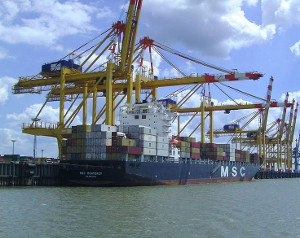Marine transport: an ever-growing strategic sector
 Marine transport is an essential activity for the countries' economies. Indeed, alone, it accounts for 90% of the overall foreign exchange of the European Union and 35% of the domestic trade between member countries.
Marine transport is an essential activity for the countries' economies. Indeed, alone, it accounts for 90% of the overall foreign exchange of the European Union and 35% of the domestic trade between member countries.
In 50 years time, the world fleet's tonnage has increased six fold while transported hydrocarbons tonnage grew ten times bigger.
The risk of a marine disaster increases with the rise of traffic. In fact, simple marine traffic can be a source of pollution due to accidental spills (loss of containers, illegal discharges, etc.). The development of maritime transport is mainly linked to larger distances and more active intercontinental trade.
For the energy sector, the ever-growing demand and the concentration of production in Middle East countries has intensified the recourse to big-tonnage oil ships, tankers.
Three main marine routes connect this region to the world's biggest oil consumers (United States, Europe, China and Japan). In 2000, 62% of the world's production in crude oil was carried by tankers.
Short-distance maritime transport is of strategic importance in the Mediterranean region. The traffic is poised to pick up momentum with the establishment, in 2010, of a Euro Mediterranean free trade zone.
Exemple d’une autoroute de la mer : le rail d’Ouessant, (France)
Annual traffic volume:
- 110 million tons of hydrocarbons (300,000 tons a day)
- 1800 tankers (5 a day)
- 8 million tons of gas (22,000 tons a day)
- 1900 gas ships (3 a day)
- 20 million tons of hazardous products (55,000 tons a day)
- Over 15,000 ships carrying hazardous products, that is, 41 a day
Read also | Maritime safety